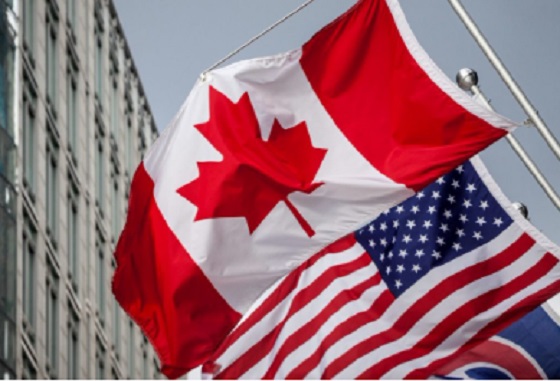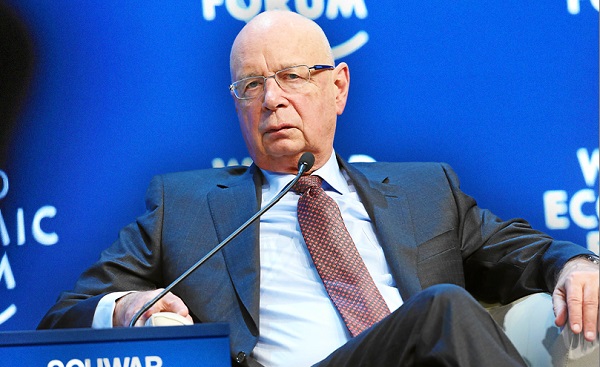Business
Canadian Energy Companies Look South For Growth

From EnergyNow.ca
By Heather Exner-Pirot
Enbridge’s announcement in September that it was acquiring three U.S.-based utilities for USD$14 billion saw Canada’s largest energy company also become North America’s largest gas utility. The deal is significant not only on its own merits, but as part of a bigger trend: Canadian energy companies that are looking for growth prospects are finding them south of the border.
The trend is not new. In 2016, Canadian utilities went on an American shopping spree. Fortis acquired ITC for USD$11.3 billion; Ontario-based Algonquin Power & Utilities Corp acquired Missouri-based Empire District Electric Company for USD$2.4 billion; and Nova Scotia-based Emera acquired Florida-based TECO in a USD$10.4 billion deal.
Pipelines were in the mix too, with TC Energy acquiring Columbia Pipeline Group, a gas transmission network, that year for USD$13 billion.
In 2017, Hydro One purchased U.S. power supplier Avista for USD $3.4 billion, and AltaGas took over WGL Holdings (which supplies natural gas to the White House) for USD $4.6 billion. More recently, TriSummit acquired the Alaska gas distribution, transmission, and storage assets of SEMCO Energy for US$800 million in March.
As such, the Enbridge utility megadeal can be seen less as a harbinger and more of a culmination.
What is behind this Canadian appetite for American utilities and pipelines? At one level, it is a response to the inherent limitations of the Canadian utilities sector, which is heavily regulated and often provincially owned. Add in Ottawa’s torrent of climate policies aiming to cut growth in Canadian oil and gas, and pastures look greener elsewhere.
But it also speaks to the confidence the sector’s biggest players have in the long term prospects for natural gas. The Dominion deal adjusts Enbridge’s earnings from a 60-40 mix between crude oil & liquids, and natural gas & renewable energy respectively, to something closer to a 50-50 split. Enbridge, like many energy companies, is betting on natural gas being a bridge fuel in the energy transition rather than being phased out. And whatever fuel mix we use in the future, it will require pipelines and distribution, whether in the form of natural gas, renewable natural gas (RNG), hydrogen or otherwise.
“…it also speaks to the confidence the sector’s biggest players have in the long term prospects for natural gas.”
Two phenomena are worth emphasizing here. The first is that the United States is seen as a jurisdiction for growth; Canada, not so much. Our biggest energy companies are expanding to the south, but the reverse is not true. Enbridge and TC Energy are leading the way, but Cenovus, Cameco, Hydro-Québec and others are also making moves, on top of the long list of utilities above.
This is not just anecdotal. According to the U.S. State Department,1 Canadian foreign direct investment (FDI) in the United States was about 26% higher than their reciprocal FDI in 2022, or USD$528 billion compared to their USD$406 billion. This is part of a broader trend that has been worsening since 2014. In that year, Canadian investment abroad was only about CAD$100 billion more than foreign investment in Canada. By 2022 the imbalance had grown to a whopping CAD$725 billion.2 Canadian companies are generating wealth; they are just generating a smaller proportion of it at home.
The second is that the Canadian and American energy markets are highly interdependent, and growing more so. In fact, 2022 saw record energy trade between our two countries, reaching USD$190 billion, almost triple what it was in the throes of the COVID-19 pandemic, and beating the last high water mark of USD$178 billion in 2008. From natural gas and liquids pipelines to refineries and electricity grids, fundamentally we have a single North American energy system.
As such, we should be developing and coordinating energy and climate policy much more closely. It is inefficient, not to mention painful for the energy sector, when Canada and the United States – and many provinces and states on top of that – propose substantially different standards, goals, and regulations. Energy is an area that needs closer policy collaboration and alignment between our two nations in order to achieve sustainability, reliability and affordability of supply.
This need is manifesting itself in a growing Canadian presence in the US capital. In the past year or so, TC Energy has established a policy team in Washington DC, and Cenovus and the Business Council of Canada have opened up offices there (as has my own think tank, the Macdonald-Laurier Institute). As entreaties to Ottawa fall on deaf ears, businesses are looking for reception elsewhere.
The Canadian energy sector is betting big on natural gas, be it through retail, pipeline transportation or LNG exports. Where possible, it’s betting on Canada too. But the United States and other markets are where growth is on offer.
We should all celebrate the success of Canadian companies abroad. But we should be creating a policy and business environment that allows them to grow in our own back yard too.
Heather Exner-Pirot is the Director of Energy, Natural Resources and Environment at the Macdonald-Laurier Institute.
Business
Chinese firm unveils palm-based biometric ID payments, sparking fresh privacy concerns

By Ken Macon
Alipay’s biometric PL1 scanner uses vein and palm-print data for processing payments, raising security concerns over the storage and use of permanent biometric data.
Alipay, the financial arm of Alibaba, has introduced a new palm-based biometric terminal, dubbed the PL1, which enables individuals to make purchases simply by presenting their hand – no phone, card, or PIN required. Positioned as a faster, touch-free alternative for payment, this system reflects a growing industry shift toward frictionless biometric transactions.
At the core of the PL1 is a dual-mode recognition system that combines surface palm print detection with internal vein mapping. This multi-layered authentication relies on deeply unique biological signatures that are significantly harder to replicate than more common methods like fingerprints or facial scans. Alipay reports that the device maintains a false acceptance rate of less than one in a million, suggesting a substantial improvement in resisting identity spoofing.
Enrollment is designed to be quick: users hover their palm over the sensor and link their account through a QR code. Once registered, purchases are completed in around two seconds without physical interaction. During early trials in Hangzhou, this system reportedly accelerated checkout lines and contributed to more hygienic point-of-sale environments.
The PL1 arrives at a time of rapid expansion in the biometric payments sector. Forecasts estimate that more than 3 billion people will use biometrics for transactions by 2026, with total payments surpassing $5 trillion. Major players are already onboard: Amazon has integrated palm authentication across U.S. retail and healthcare facilities, while JP Morgan is gearing up for a national deployment in the same year.

Alipay envisions the PL1’s use extending well beyond checkout counters. It is exploring applications in public transit, controlled access facilities, and healthcare check-ins, reflecting a broader trend toward embedding biometric systems in daily infrastructure. However, while domestic deployment benefits from favorable policy conditions, international expansion may be constrained by differing legal standards, particularly in jurisdictions that enforce stringent rules on biometric data usage and consent.
Despite the technological advancements and convenience the PL1 offers, privacy remains a major point of contention. Unlike passwords or cards that can be reset or replaced, biometric data is immutable. If compromised, individuals cannot simply “change” their palm patterns or vein structures. This permanence heightens the stakes of any potential data breach and raises long-term concerns about identity theft and surveillance.
Alipay’s approach, storing encrypted biometric templates locally on devices and restricting data flow within national border, does address certain regulatory demands, especially within China, but the broader implications of biometrics are likely to be a growing privacy and surveillance concern in the coming years.
Business
Trump considers $5K bonus for moms to increase birthrate

 MxM News
MxM News
Quick Hit:
President Trump voiced support Tuesday for a $5,000 cash bonus for new mothers, as his administration weighs policies to counter the country’s declining birthrate. The idea is part of a broader push to promote family growth and revive the American family structure.
Key Details:
- Trump said a reported “baby bonus” plan “sounds like a good idea to me” during an Oval Office interview.
- Proposals under consideration include a $5,000 birth bonus, prioritizing Fulbright scholarships for parents, and fertility education programs.
- U.S. birthrates hit a 44-year low in 2023, with fewer than 3.6 million babies born.
Diving Deeper:
President Donald Trump signaled his support Tuesday for offering financial incentives to new mothers, including a potential $5,000 cash bonus for each child born, as part of an effort to reverse America’s falling birthrate. “Sounds like a good idea to me,” Trump told The New York Post in response to reports his administration is exploring such measures.
The discussions highlight growing concern among Trump administration officials and allies about the long-term implications of declining fertility and family formation in the United States. According to the report, administration aides have been consulting with pro-family advocates and policy experts to brainstorm solutions aimed at encouraging larger families.
Among the proposals: a $5,000 direct payment to new mothers, allocating 30% of all Fulbright scholarships to married applicants or those with children, and launching federally supported fertility education programs for women. One such program would educate women on their ovulation cycles to help them better understand their reproductive health and increase their chances of conceiving.
The concern stems from sharp demographic shifts. The number of babies born in the U.S. fell to just under 3.6 million in 2023—down 76,000 from 2022 and the lowest figure since 1979. The average American family now has fewer than two children, a dramatic drop from the once-common “2.5 children” norm.
Though the birthrate briefly rose from 2021 to 2022, that bump appears to have been temporary. Additionally, the age of motherhood is trending older, with fewer teens and young women having children, while more women in their 30s and 40s are giving birth.
White House Press Secretary Karoline Leavitt underscored the administration’s commitment to families, saying, “The President wants America to be a country where all children can safely grow up and achieve the American dream.” Leavitt, herself a mother, added, “I am proud to work for a president who is taking significant action to leave a better country for the next generation.”
-

 2025 Federal Election2 days ago
2025 Federal Election2 days agoOttawa Confirms China interfering with 2025 federal election: Beijing Seeks to Block Joe Tay’s Election
-

 2025 Federal Election1 day ago
2025 Federal Election1 day agoBREAKING: THE FEDERAL BRIEF THAT SHOULD SINK CARNEY
-

 2025 Federal Election2 days ago
2025 Federal Election2 days agoHow Canada’s Mainstream Media Lost the Public Trust
-

 2025 Federal Election2 days ago
2025 Federal Election2 days agoReal Homes vs. Modular Shoeboxes: The Housing Battle Between Poilievre and Carney
-

 Media1 day ago
Media1 day agoCBC retracts false claims about residential schools after accusing Rebel News of ‘misinformation’
-

 John Stossel1 day ago
John Stossel1 day agoClimate Change Myths Part 2: Wildfires, Drought, Rising Sea Level, and Coral Reefs
-

 2025 Federal Election1 day ago
2025 Federal Election1 day agoCHINESE ELECTION THREAT WARNING: Conservative Candidate Joe Tay Paused Public Campaign
-

 Business1 day ago
Business1 day ago‘Great Reset’ champion Klaus Schwab resigns from WEF






